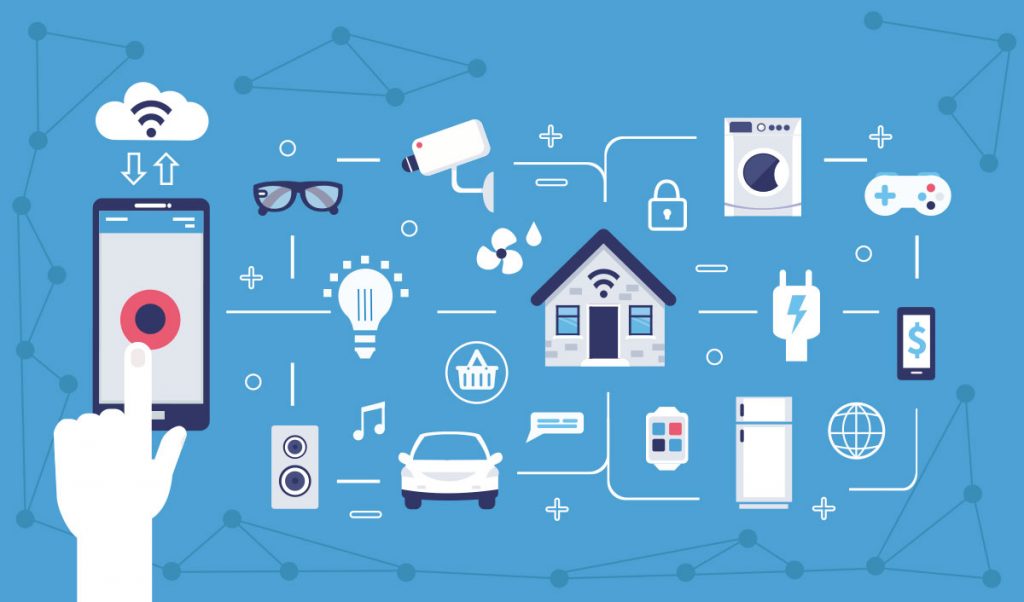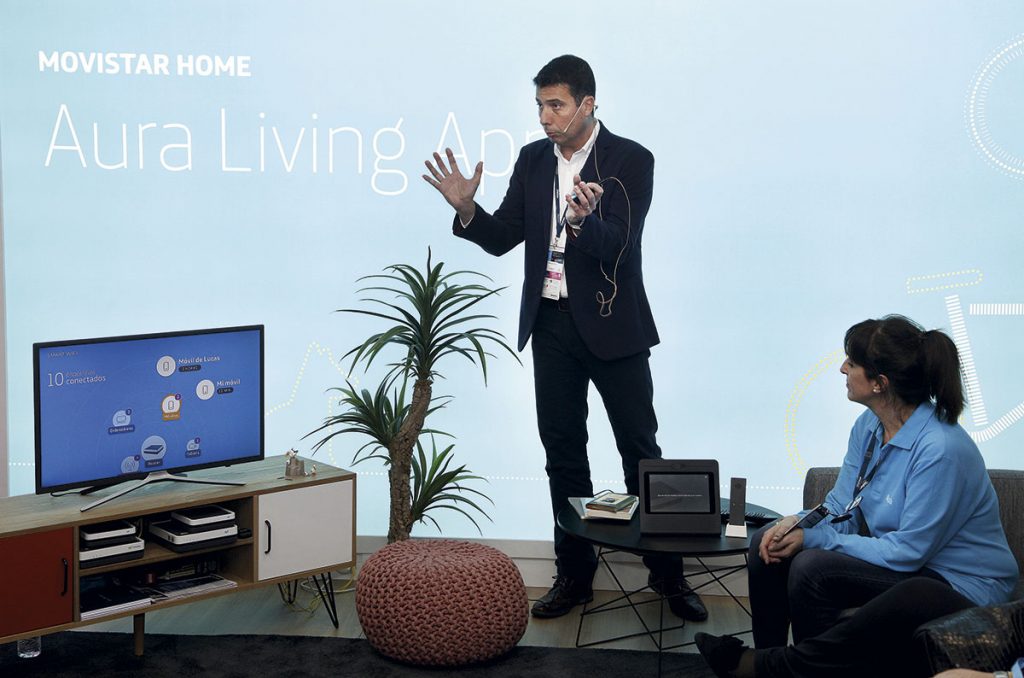Telcos get smart
 Telecom operators are increasingly looking to smart home applications to deliver additional revenues, but partnerships are crucial to making this work, writes Anna Tobin.
Telecom operators are increasingly looking to smart home applications to deliver additional revenues, but partnerships are crucial to making this work, writes Anna Tobin.
Service providers are increasingly looking beyond the triple or quad-play bundle. With OTT streamed content now eating into their traditional pay TV subscriber revenues and competition in broadband access becoming intense, cable and telecom providers see a need to tap new revenue streams. It is for this reason that so many of them want to be at the forefront of an Internet of Things (IoT)-enabled smart home revolution.
Tunnelled right into the home, network operators are well placed to exploit the opportunities all these wonderful new internet-enabled smart things offer. But while the telcos want a chunk of the revenues, they don’t want to be associated with any glitches that are likely to beset any emerging technology. Cybersecurity, in particular, has proven to be a big issue for many IoT vendors. One wrong step and a telco’s reputation can be ruined overnight.
Telcos already know about the issues that smart home technologies throw up because their customer service providers are often the first point of call for complaints, even if the issue has nothing to do with them. Telco subscribers who are streaming a live football match, for example, will often call their service provider when they experience buffering or latency because they assume it’s their fault. More often than not, it’s a separate issue that is nothing to do with the telco.
But some shrewd operators sees these wrongly directed customer service calls as an opportunity, not a waste of time. To leverage their position as the first point of call, many are now looking to take ownership of the whole home network.
“They want to create a carrier-branded solution that covers the infrastructure that you put inside your home,” explains Bruno Tomas, director of programme management at the Wireless Broadband Alliance.
“The solution is to have very effective and robust guidelines and companies such as BT, Comcast and Liberty Global have all been contributing to creating this.”
These guidelines will effectively ask customers to commit to only using equipment provided by their telco – or their recognised partners – as part of their home network. If they use a service not covered by these guidelines, consumers will likely invalidate their telco service guarantee. Loyalty is the price they will pay for cybersecurity and quality of service.
“Anyone can buy a router from anywhere and add it to their home mix and suddenly create problems. These guidelines are regarded as the solution and they include not only an architecture proposal, but also end-to-end security,” says Tomas. “To protect operator traffic there must be a way on the end-to-end network to show you all of the components that are there. That is the premium that I believe they are advocating to customers.”
Telefónica announced the launch of its Aura platform at Mobile World Congress (MWC) 2017. This is designed to “enable users to manage their digital experiences with the company and control the data generated by using Telefónica’s products and services in a transparent and secure manner.”
Aura is not a smart-home proposition per-se, says Oscar Mancebo, head of Movistar Home at Telefónica, but it is a gateway for bringing artificial intelligence into the home and it is continually evolving. “Telefónica’s chief data officer presented at MWC 2019 with new plans to expand the use of its cognitive intelligence Aura in the home, developing the new vision of ‘Home as a Computer’ in collaboration with Microsoft,” explains Mancebo.
“Home as a Computer’s mission is to open the Telefónica connected-home ecosystem to third parties. The company will leverage its position as number one provider of home technology in multiple countries by connecting the devices and mobile apps with Aura and allowing new digital experiences to be built on top,” he says. “These are the living apps, relevant new services that may be first-party like Smart WiFi, Connected Car, Movistar Cloud or third-party like El Corte Ingles, Atletico de Madrid and Air Europa.”
Getting the key to this smart home gateway, however, isn’t easy. Any third-party looking to connect to the Aura platform must pass Telefónica’s high privacy standards.
Partnering with IoT players
If telcos are to keep control of the home network, they must partner with the growing number of IoT companies that are now pushing their devices to consumers.
Security cameras, geo-fencing solutions to track children and remote health monitors are just some of the devices people are now adding to their home networks. Mancebo says that Telefónica has narrowed down its smart home focus to “TV and entertainment, communications and management of home connectivity”.
“The first steps are into thermostat control and lights, etc. and then third-party services reinvented with AI and a voice-user interface – e-commerce, football clubs, airlines – we are actively exploring more areas that are relevant to customers. We want to help the discovery of relevant services and deliver new enriching experiences that are truly relevant to customers. Finding the balance between this and monetisation is our challenge,” he says.
The need to make these additional services monetisable is the main reason why telcos will largely position themselves as gateways into the home for third-party smart-home service providers, rather than actually moving into smart home app provision themselves. “We don’t see service providers offering these devices themselves, because that takes a lot of know-how and expertise, but what they are looking at is how they can onboard and manage these devices in a seamless way, so that it becomes say a Comcast-validated device or a Liberty-Global-validated device,” explains Tomas at the Wireless Broadband Alliance.
“It avoids the operator becoming just the pipe and gives it the chance to up sell because it has a common branding and common security. I believe that there are also some interesting things around the concept of creating in-home hybrid networks, where the operator will still have control of the network, but, for instance, if the user would like to enable specific services over their networks they could do so.
“There is a trend of more people working from home. This doesn’t always just require Wi-Fi coverage. There are services that companies want to push in specific regions of the world. For instance, if you need to access a virtual private network, you can do it over a set of service provisioning items. Partnering with common enterprises that have this flexible model is another way for operators to up sell their services.”
Another obvious segment for telcos to develop partnerships with is television manufacturers. James Thomas, product manager of home entertainment at LG Electronics says that it makes sense for his company to help service operators to enter the smart home space.
“LG are leading providers of smart home technology – from TVs to speakers to home appliances – and an integrated-user experience is at the heart of our product offering. Each new TV line-up brings a bounty of new features that are there to support and encourage connectivity with telecoms services, such as in-built Google Assistant, which connects to other smart appliances around the home,” he says.
It is unlikely, however, that a main TV will become the central control for the entire smart home infrastructure. With smartphones, tablets, PCs and multiple TVs around the home, it makes more sense for the smart home controls to be accessible from any connected screen.
“The TV is becoming one more device in the home environment,” explains Tomas at the Wireless Broadband Alliance. “Multi-device is what the operators are focusing on and this is why they realise it is important to harmonise all of the smart-home architecture. In any household, you may have several devices per person, and everyone is using these OTT applications for video and to access service provider applications that are mobile based. The TV is only one part of that equation.”
Nevertheless, Anthony Zuyderhoff, senior vice president international CPE at CommScope, now incorporating Arris, believes that there is still scope for the TV to be the go-to for some smart-home services.
“With the emergence of ‘voice-visual’ assistants both for the home, as well as on smartphones, there is a growing realisation that some voice interaction is better served by adding a visual component as well,” he says.
“Asking for the weather today in your town is relatively easy to ‘listen’ to, however, asking what the weather will be like for the entire week is more challenging without a visual aid. What better visual aid exists in most homes than the TV screen? It is generally located in more than one location in homes, and with the technology Arris is developing, we can leverage our new smart media devices to give people both audio and visual interactivity,” says Zuyderhoff.
“This is a great way for people to search for their favourite video content, monitor the health of their home network, set thermostats or light their homes, and leverage a myriad of other voice-visual skills that are being developed around the world. There is also now a growing trend to add the most popular IoT services as a software download to a gateway or SMD. Smart home companies recognise the importance of supporting the consumer in having fewer home hub devices. They are, therefore, working to add hub solutions as software to the service providers’ existing devices.”
Software solvers
Because of the complex technologies involved in creating a truly smart home, telecom operators are working with a host of software providers to deliver what they promise. “Telecom service providers do not have the ability to innovate at the pace required to support smart home services,” says Sylvain Thevenot, managing director of Netgem.tv. “This is due to the fact that the standards are not established, new technologies arise very quickly, and that they need to focus their capex investments on important network developments – fibre and 5G in particular.”
Arris, now part of CommScope, is focusing on integrating all the different smart home devices as they come on stream.
“We have introduced a new segment of SMDs, which combine the functionality of some of the most important devices in the home – including the set-top, speakers, smart assistant, IoT hub, and remote control,” explains Zuyderhoff.
“This category intends to capitalise on the growing trend around premium sound, voice control and seamless integration of various consumer services. We’re investing in concepts around integrated sound bars, as well as more mainstream audio-enabled devices. We are also integrating technologies from Google and Amazon, which will allow service providers to offer more services to their customers with less electronic ‘clutter’ by combining, for example, a video device with a voice assistant or a gateway with a speaker.”
One of the questions that still hasn’t been unanimously decided on is whether the home network is better off being managed within the home or within the cloud.
“There is this big discussion right now with many of the home broadband providers in terms of where in the home environment the operators would like to see the intelligence to manage all of these devices. Whether it’s more of a cloud-based approach or a more of a local edge of the network approach,” says Tiago Rodrigues, general manager at the Wireless Broadband Alliance.
“Do you have more intelligence inside the house with more gear that will somehow manage the multiple devices that are connected in the home environment or do you want to push it to the core of the network with a cloud-based approach?”
As the standards, technology and smart home services develop, the answer to this question will become apparent.
Talking smart homes
Voice-activated devices are set to make the smart home more user friendly, not just for actioning, but also for search.
Netgem.tv MD Sylvain Thevenot believes that voice control services will play an increasingly important role in smart homes. “Netgem has been a pioneer of voice control with TV and launched in 2017 the first Alexa skills controlling a TV service (EETV), subsequently expanded to support Google Voice – and richer in features. Initially used for ‘remote control shortcuts,’ our voice-control services now allow simple access to content through ‘recommendations.”Integrating voice control with video, is a particularly interesting development agrees Anthony Zuyderhoff, SVP at CommScope.
“The emergence of voice assistants is opening exciting new opportunities for service providers in the video and broadband sectors,” he says. “In video, the ability to search for pieces of content without the occasionally cumbersome use of a remote control is but one of many exciting use cases. Other broadband use cases could be visualising and fixing your Wi-fi network, setting up parental controls, or setting up a guest network, to name a few. It also allows service providers to think of new, exciting ways to reduce churn and improve ARPU, as they could be the central hub for more than ‘just’ video and basic data services.”
Voice control can be difficult in certain settings, points out Bruno Tomas at the Wireless Broadband Alliance. He highlights in an apartment setting where sensitive receivers can pick up speech from a neighbouring property, or where multiple people are speaking simultaneously in a busy home.






